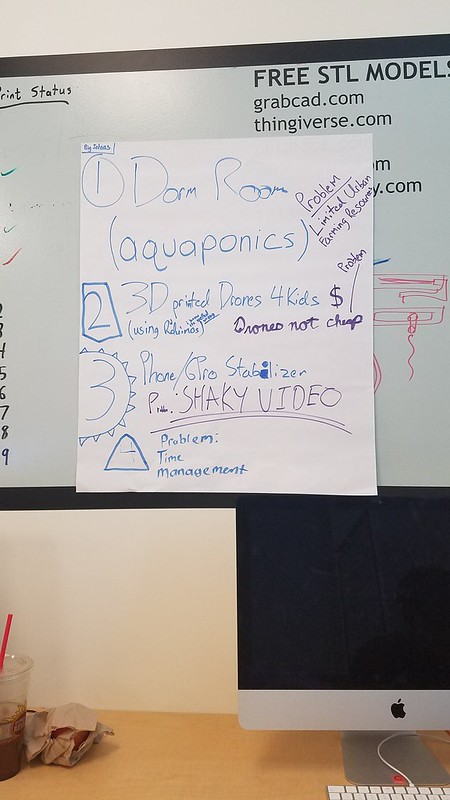The process of creating a product is a long and tedious process of trial and error. One can not simply think of something and then assume that the product will change the world. There has to be a need for the product to become successful, there has to be demand for a solution to an inherently big problem. This week we are at the ideating stage of the course. Our teams brainstormed problems that need to be addressed in various demographics. Team IJK, focused on 3 problems in our everyday lives and came up with a few How Can We… questions.
- Problem 1: College students have limited options when it comes to urban farming and we are targeting consumers trying to grow plants indoors in, areas. Examples include dorm rooms or small studio apartments.
- HCW introduce college students to more urban farming methods on a college campus?
- Problem 2: Amateur filmmakers utilize cameras that may be shaky and have distorted views. We are trying to increase the quality of handheld videos with an analog but portable solution. Potential exists for using digital technologies integrated into 3D printed hardware.
- HCW help amateur filmmakers reduce shaky videos from their phones or GoPros?
- Problem 3: College students tend to procrastinate and are not able to focus. We are trying to decrease the amount of time people spend procrastinating and trying to get people to work more efficiently.
- HCW solve time management issues when trying to focus on a task for college students at home?
Upon developing these ideas, our team analyzed each idea through the 10 questions posed in this weeks reading “10 Ways to Evaluate a New Business Idea”. We have not narrowed down our ideas but it put the projects in a new perspective and allowed us to visualize if it is a viable opportunity or not. Creative sparks come from all shapes and forms and so the notion highlighted in Science Mag suggested that in order to reach creative ideas, one needs to be able to be free of guidance, constraints, and criticism. In other words, for our projects to be successful, we have to think outside of the box and allow for our minds to explore every possible solution to the problem. Upon identifying a problem space, you need to analyze the assumptions attached, define the opportunity, picture the target audience and then prepare for the worse case scenario. The Innovation Management article highlights all these methods and gives us more ways to ideate efficiently.
Another article I found to be helpful was published by the Harvard Business Review. The article states that ideating and generating ideas is great but it is quintessential to be able to narrow down the focus and to develop the main ideas thoroughly. Refining existing products and analyzing their strengths and weaknesses may give insight into how we can reiterate it into a new idea. Mike Bohlmann spoke this week about his hobby of making and tinkering and it allowed me to appreciate how much preparation and consideration went into developing an idea and then executing it.


